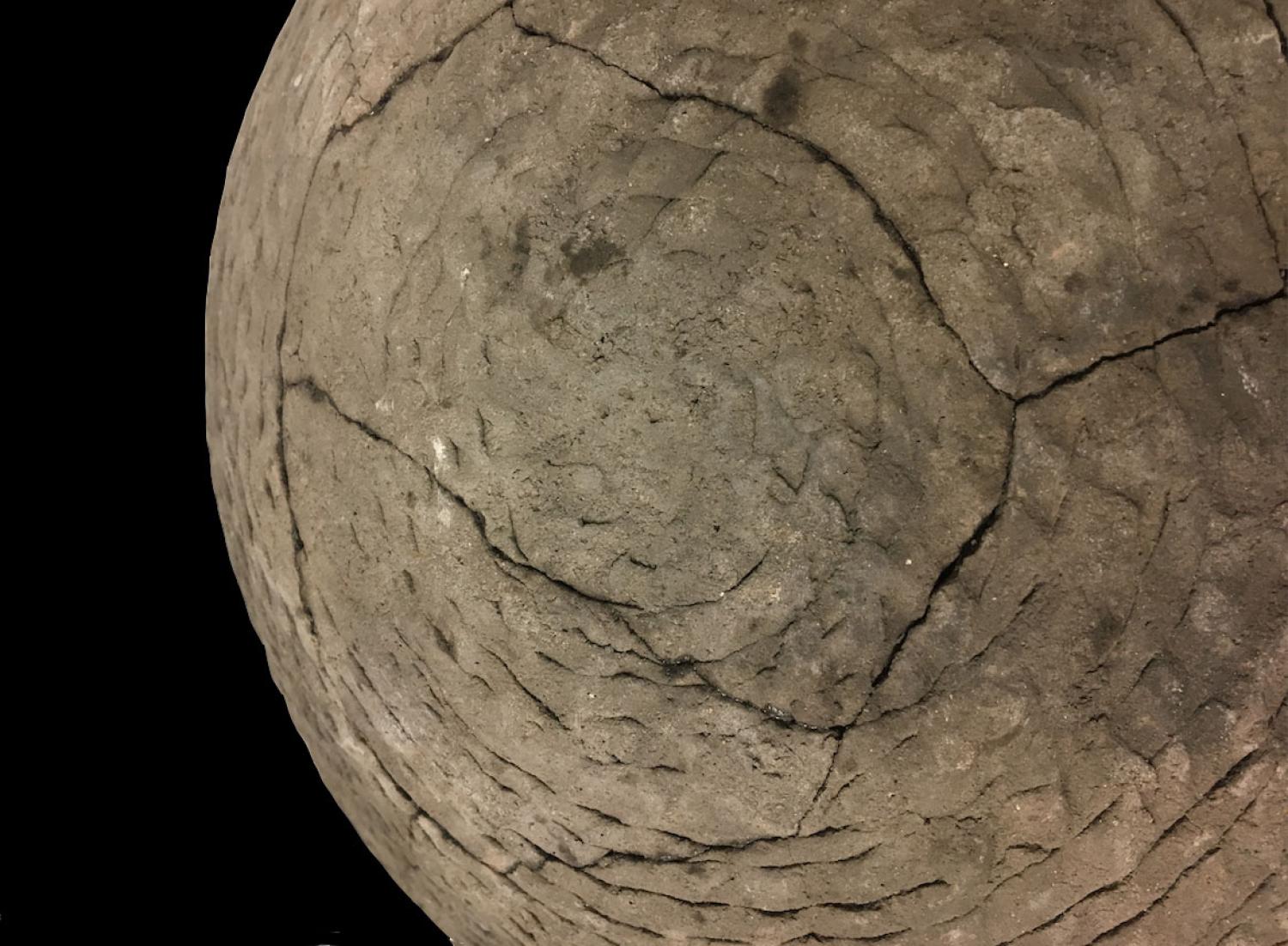The CU Museum is closed we will be opening early in the spring semester.
During this time, collection visits will be available by appointment and other special access requests will be considered on a case-by-case basis.
Please email cumuseum@colorado.edu for more information.
Olla
Pottery in the Northern Southwest is constructed by coiling ropes of clay and scraping the surface to obliterate the coils. Corrugated pottery, like the one featured here, is not scraped smooth on the exterior surface; instead, coils are pinched together, sometimes leaving behind fingerprints from their makers. This vessel, an olla, was recovered near Aztec Ruins National Monument in northern NM and dates back nearly 1000 years ago. Archaeologists believe it was likely used for storage due to its large size. The photo shows its base, where the clay began to be coiled.
The majority of archaeological research in the Southwest focuses on decorated pottery. In the past 10-20 years, researchers have started to recognize the ways in which corrugated vessel construction techniques could be used to understand identity as well. This is based on the idea that how we make pottery, especially the less obvious and conscious choices we make in the process, is based on who teaches us (“communities of practice”). Using subtle differences in how corrugations were made has led to the identification of multiple social groups within Ancestral Puebloan communities.
This vessel that is housed in the Museum’s Anthropology Collection, was reconstructed from numerous, small pieces of pottery (sherds). Where the individual sherds were found at an archaeological site can provide important information on the depositional practices within a community, including access to and relationships among rooms. What is found within a space can provide information about who used that space and what was done there, helping to provide more insight into the lives of the distant ancestors of today’s Native Americans.
Dr. Samantha Fladd, a new Curator of Archaeology and Assistant Professor of Anthropology at CU Boulder utilizes archival records and museum collections in her research to tease out evidential and contextual information about the indigenous peoples of the American Southwest. To learn more about the fieldwork and collaborative projects Dr. Fladd is leading, tune into episode #4 of our Museum Unlocked, podcast series.
Name of object: Olla
Date collected and/or acquired: 1914
Time period made (or lived): Late 1000s through 1200s likely
General location found: 0.5 mi from Aztec Ruins National Monument (Northwestern NM)
Who found/studied it: Earl Morris
Catalog number: 00149


